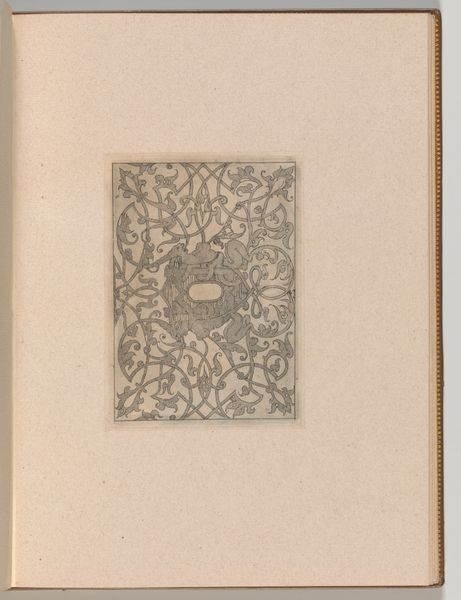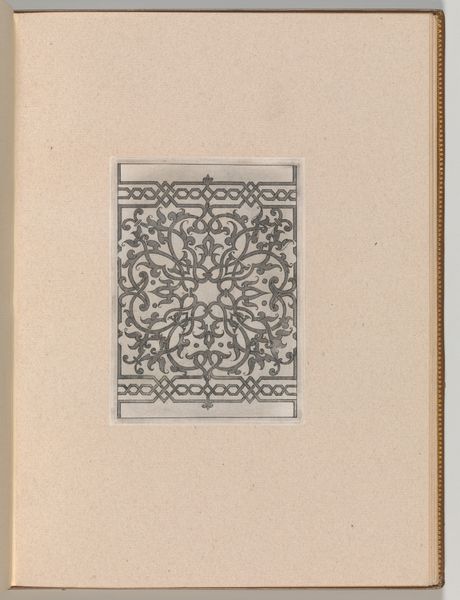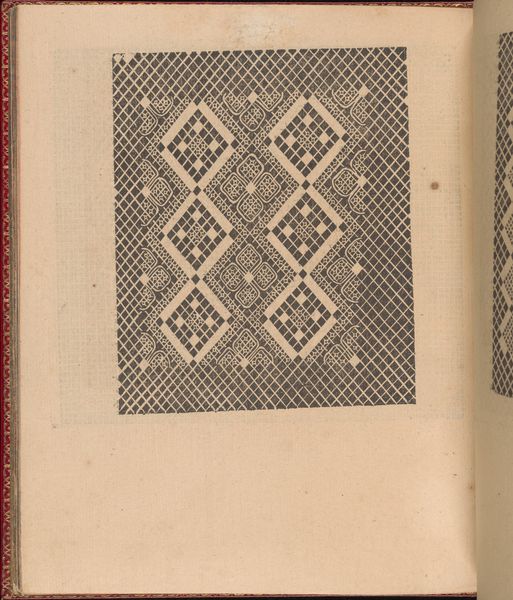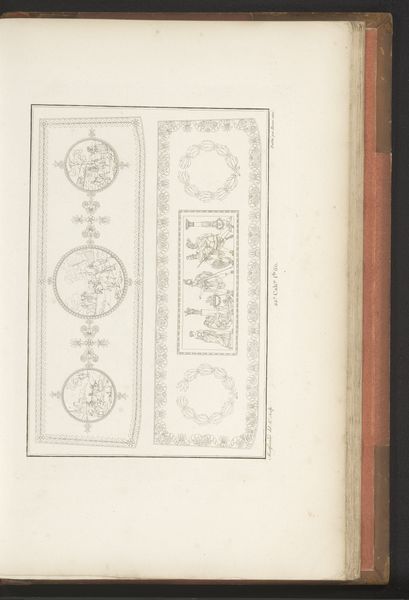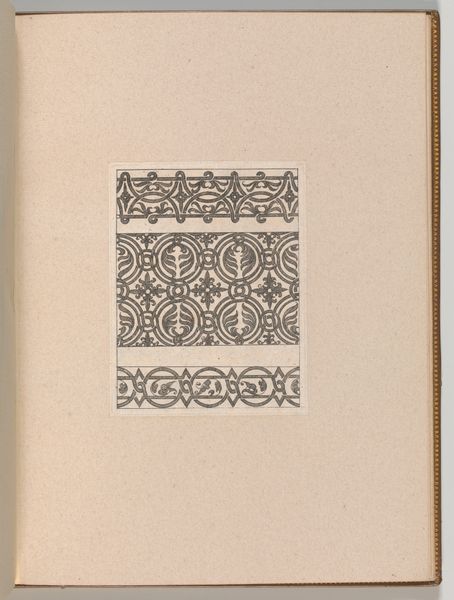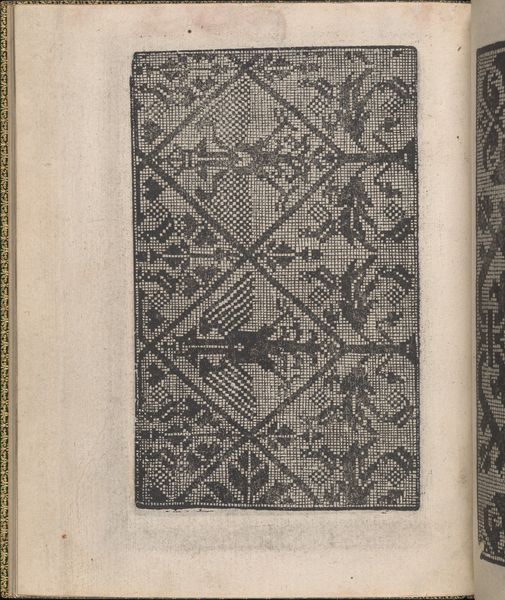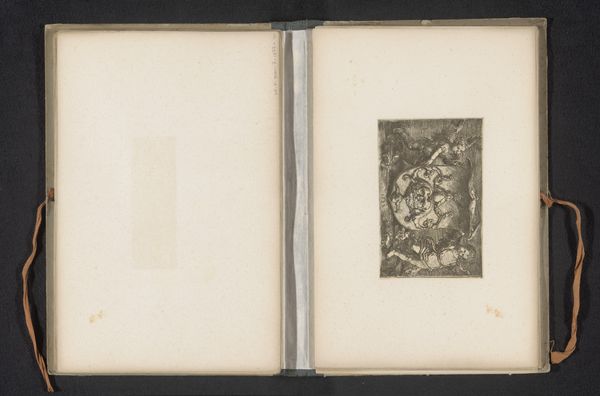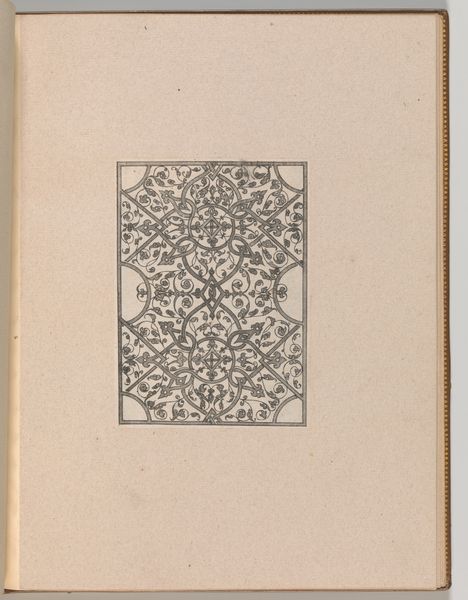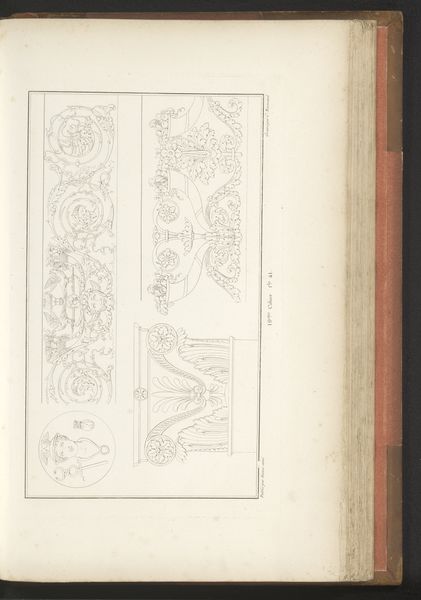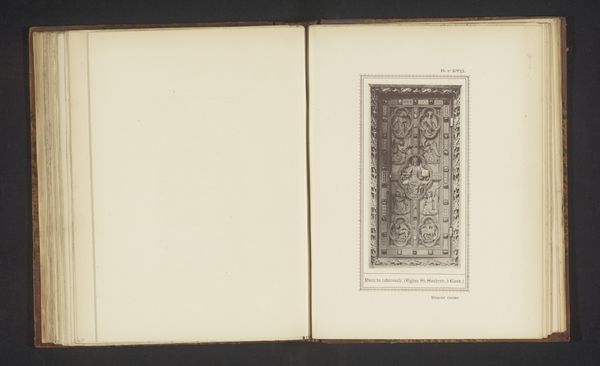
Copies after the 'Livre contenant passement de moresques' (plate 12) 1800 - 1900
0:00
0:00
drawing, print, paper, engraving
#
drawing
# print
#
paper
#
line
#
islamic-art
#
engraving
Dimensions: Sheet: 4 13/16 × 3 9/16 in. (12.2 × 9 cm) Plate: 4 1/2 × 3 5/16 in. (11.5 × 8.4 cm) Overall: 10 1/16 × 7 7/8 in. (25.5 × 20 cm)
Copyright: Public Domain
This is plate 12 from 'Livre contenant passement de moresques', made by Jacques Androuet Du Cerceau in the 16th century. At its heart, we see a figure enmeshed within the swirling arabesques. The arabesque, a motif echoing from ancient Islamic art, winds around the human form. It is a dance of abstraction that, over time, has been reborn in different forms. Consider its echoes in the Celtic knotwork or the illuminated manuscripts of the medieval period. The figure, seemingly trapped by this organic cage, evokes an unconscious struggle. Is it a symbol of man's connection to nature, or perhaps a primal fear of being consumed by it? The arabesque, originally a symbol of infinite beauty and divine order, here takes on a more ambiguous, even unsettling, dimension. It's a visual reminder of how symbols constantly evolve, their meanings shaped and reshaped by the anxieties and aspirations of each new age. This continuous cycle of reinvention is not linear but cyclical, echoing through time, proving that the past is never truly dead.
Comments
No comments
Be the first to comment and join the conversation on the ultimate creative platform.
